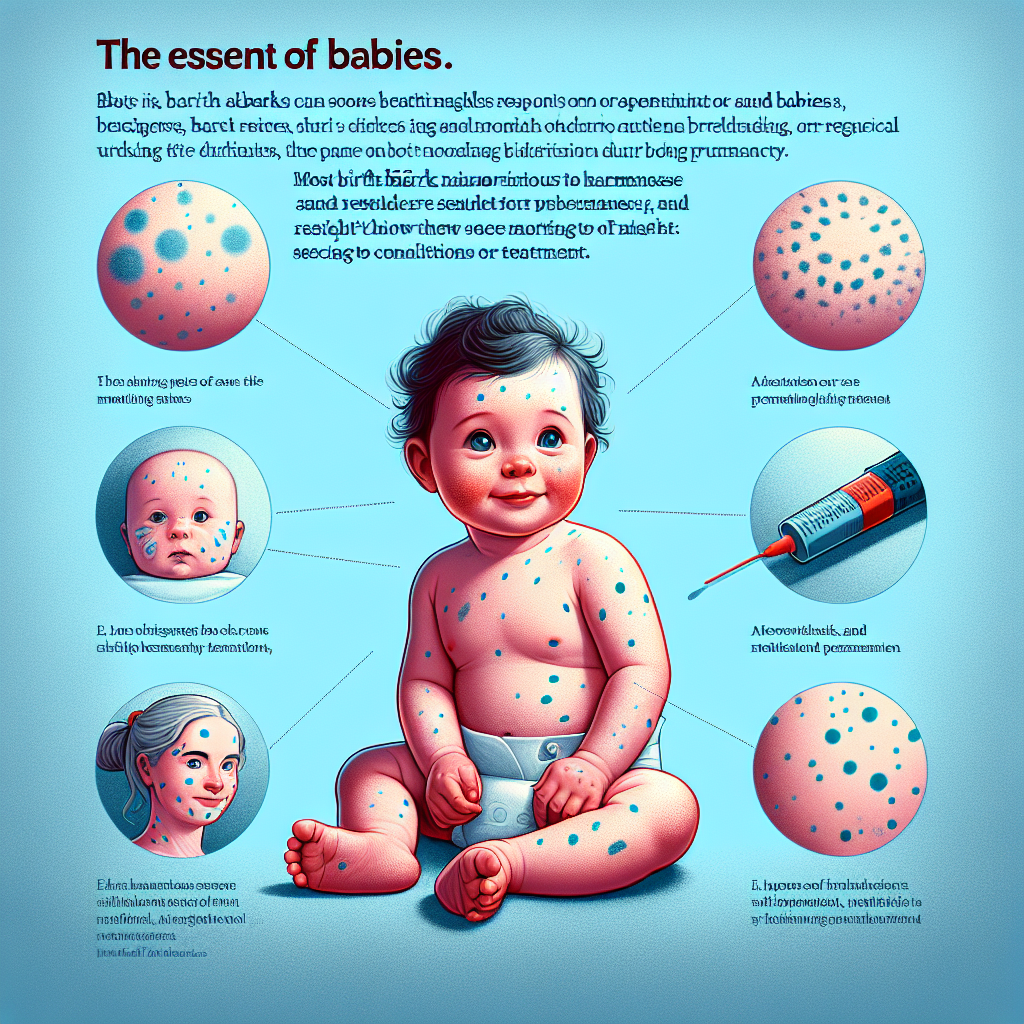Baby Birth Signs: What You Need to Know
Birthmarks in babies can often raise a number of questions and concerns from parents. In this article, we'll explore what they mean, when you should see a pediatrician, and how to monitor your little one's healthy development.
Understanding Birthmarks
Birthmarks are pigmented abnormalities of the skin present at birth or appearing in the first weeks of life. They can take various shapes and sizes, from small light-colored spots to large formations that cover extensive parts of the body.
In addition to the aesthetic aspect, birthmarks can also have medical meanings that are important for any parent to know. Some newborns show harmless signs that disappear on their own with time. Other signs, however, may indicate medical conditions that require monitoring or treatment.
Common Types of Birthmarks
There are several types of birthmarks that can appear in babies. The most famous are:
- Hemangiomas, which are slightly raised, red bumps caused by abnormal blood vessels in the skin.
- Freckles, small gray or brown spots, which can appear on the entire surface of the body.
- Melanocytic nevi, also known as moles, which are clusters of pigment cells and are generally harmless.
- Cafe au lait spots, light-colored birthmarks similar to the color of coffee with milk.
It is important to know that most of these signs are harmless and do not need treatment. However, a pediatric consult can help identify the types of injuries and establish an appropriate monitoring plan.
When to Seek Medical Help
Although most birthmarks are not a medical emergency, there are situations in which it is recommended to consult a doctor: - Formation rapidly enlarges or changes appearance. - The sign is located in an area that may interfere with vital functions, such as the mouth or eyes. - If the mark becomes infected or starts to bleed.
It is essential to watch for any changes in birthmarks in babies and to constantly maintain good communication with your pediatrician.
Monitoring the health of the baby's skin
To ensure the healthy development of your baby, it is important to monitor the status of birthmarks and keep track of any changes. You can do this by keeping a photo diary or measuring the mark periodically to track its growth.
If you notice any worrying changes, you should not hesitate to contact a specialist.
Treatments and Care for Birthmarks
If a birthmark requires medical intervention, there are several treatment options available: - Laser therapy can be used to fade or eliminate some types of marks. - Surgical care is an option for larger birthmarks or those that may cause complications. - Special medicines, prescribed by the pediatrician, can help control the growth of some types of hemangiomas.
Often, proper care will minimize or eliminate the need for invasive treatments, but it's important to follow your doctor's recommendations.
Conclusion
Birthmarks in babies are common and in the vast majority of cases do not represent a health problem. Careful monitoring and effective communication with your pediatrician are the best ways to ensure that any birthmarks are treated appropriately and that your baby has a healthy development.
If you are interested in finding out more tips on caring for your baby or need recommendations for specific care products, we invite you to visit the dedicated section on our website or subscribe to our newsletter for the latest information and resources.














































































































































